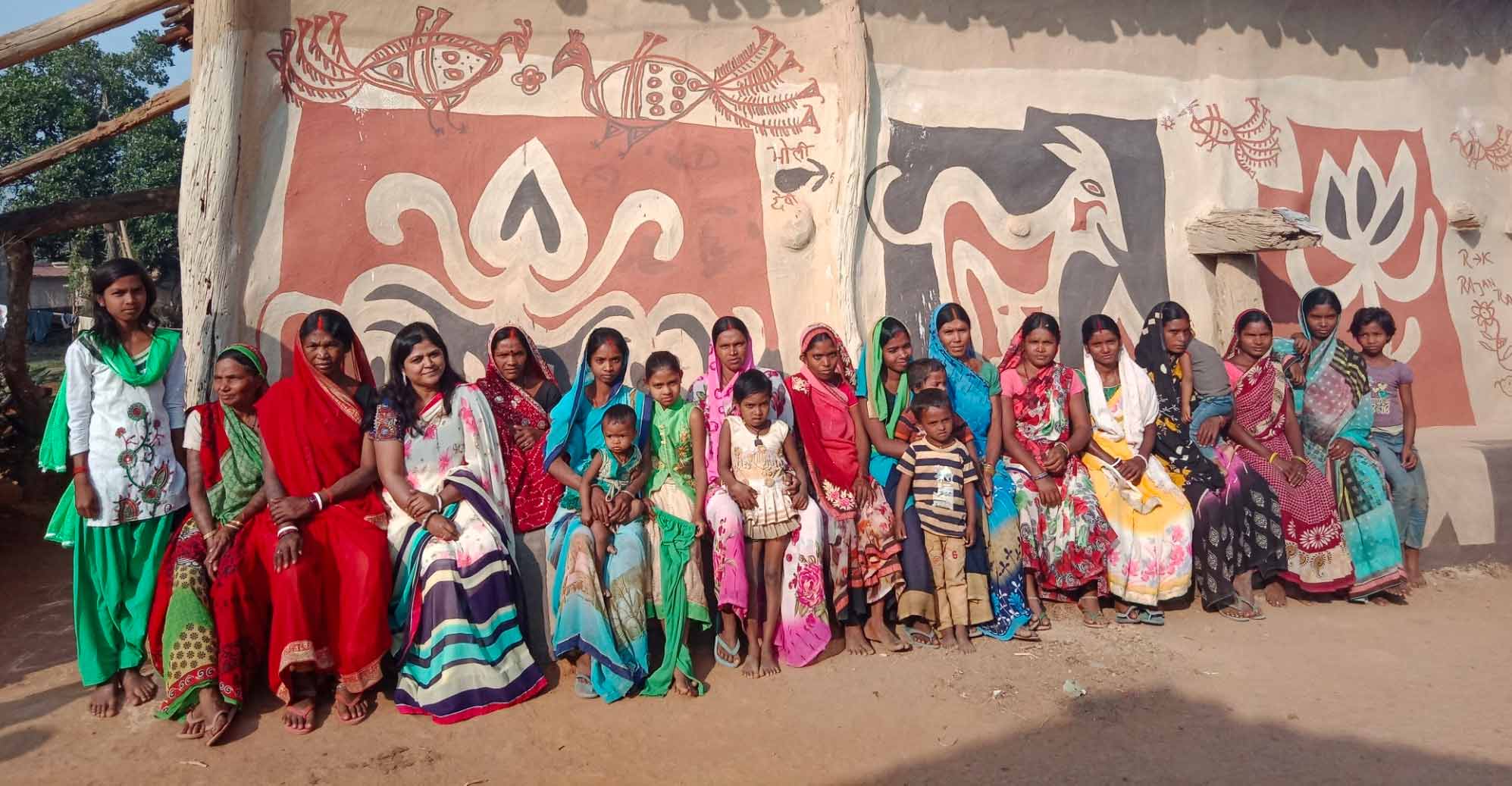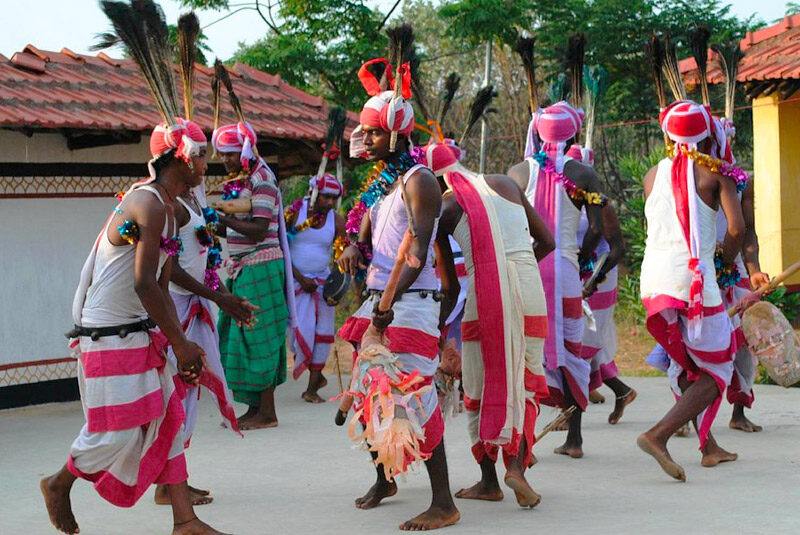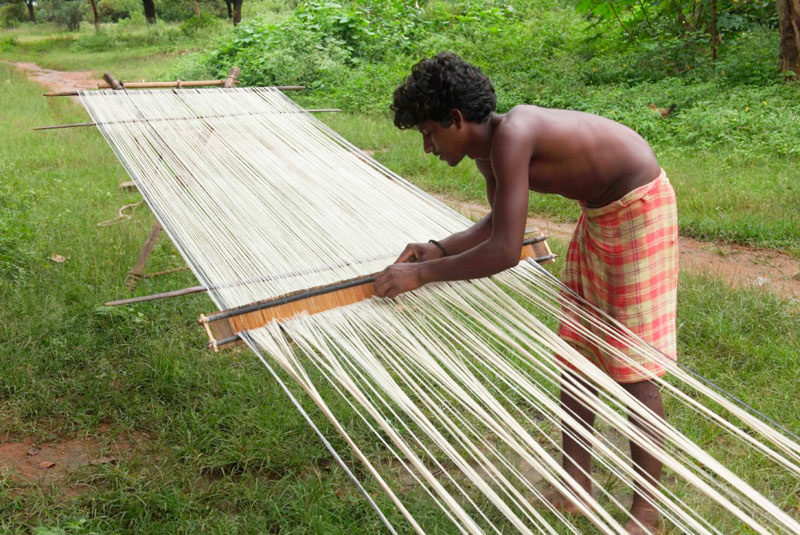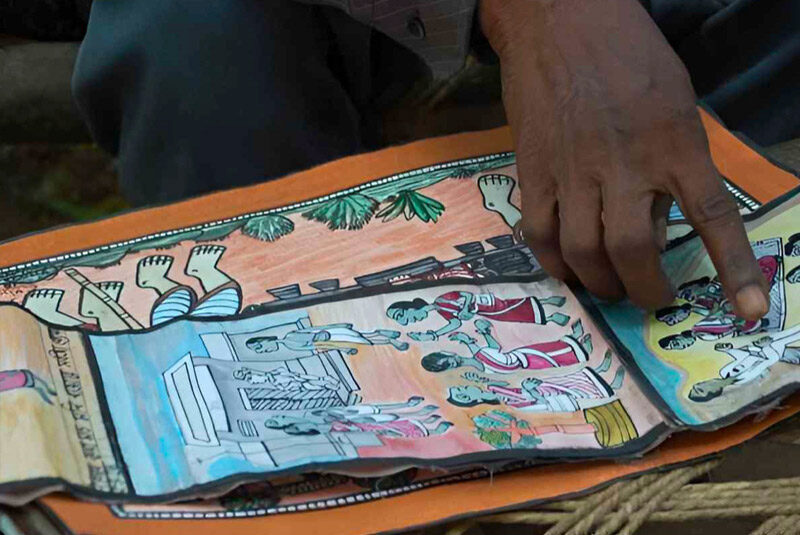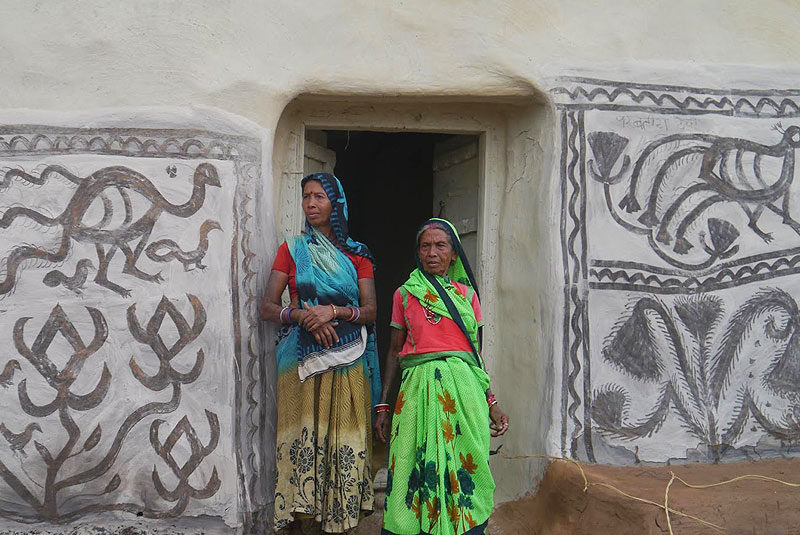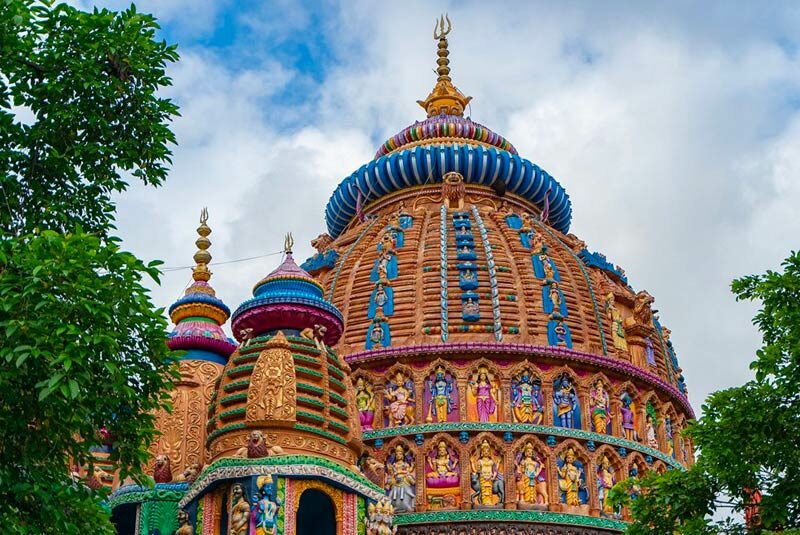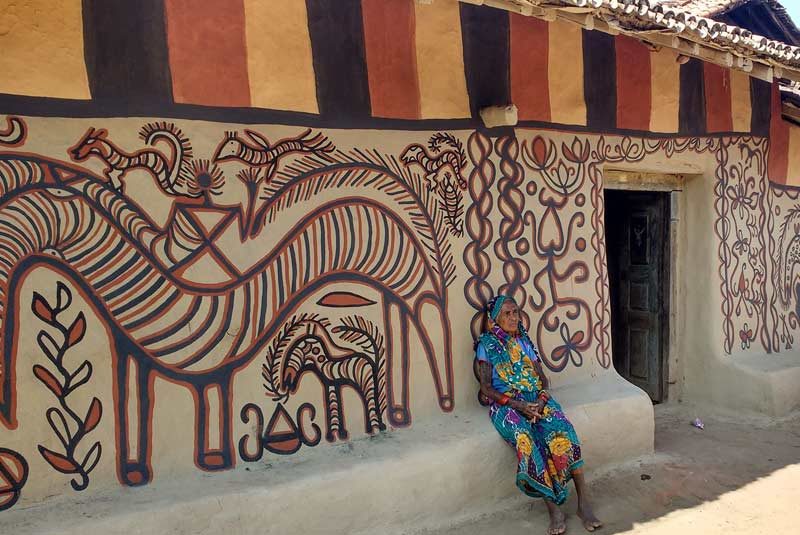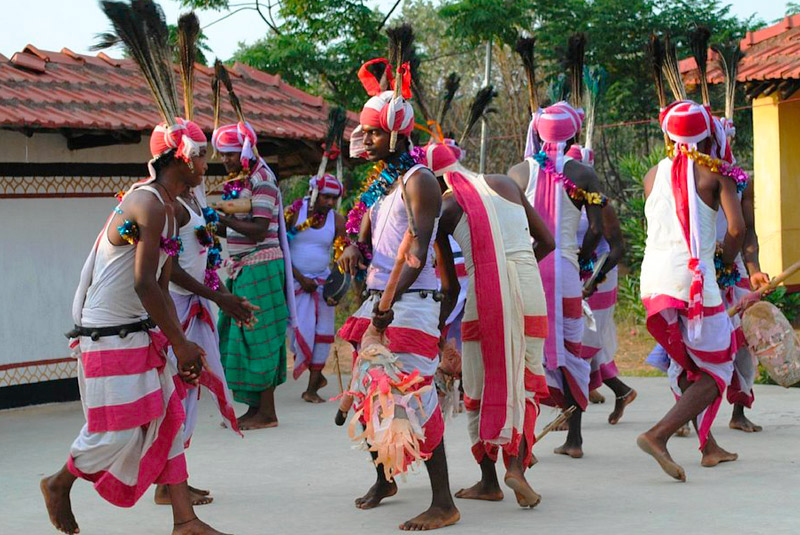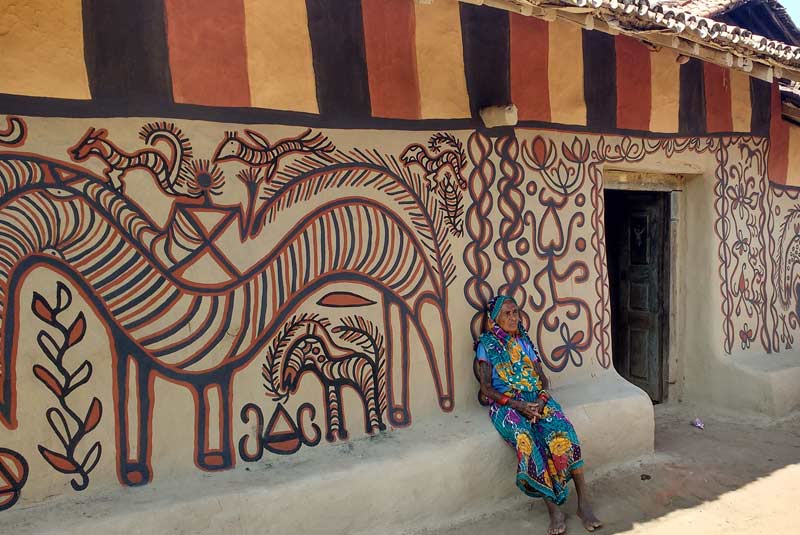Jharkhand, ethnic tour
Journey to Jharkhand, one of the least visited states in India, where you discover the rich ancestral traditions of the region’s ethnic groups.
Jharkhand is home to numerous tribal peoples, each with their own unique history, customs, and way of life. Away from the usual tours, you’ll have the privilege of meeting these communities, interacting with their members, and gaining a firsthand understanding of how they preserve their centuries-old traditions.
Jharkhand also offers a fascinating world of Sohrai murals. These vibrant works of art are not mere decorations; they are a profound and joyful celebration of nature and rural life, created primarily by the women of the community during harvest time.
The end of your journey will take you to West Bengal. More specifically, you will travel to Purulia to meet the artists of Chhau, a dance listed as a UNESCO Intangible Cultural Heritage Site.
Who is this trip for?
For anyone who loves traditional arts, rural life and ethnic encounters.
Please note: this state is still not very touristy, so hotels are often simple.
When is the best time to travel to Jharkhand?
From October to March, but especially before the Diwali period to witness the Sohrai paintings
Since each trip is tailor-made, the price shown is an estimate. Your final quote will depend on your choices, such as hotel category, number of participants, vehicle type, and time of year. We will provide you with a personalized (and free) quote after discussing your preferences in detail.
WHAT’S INCLUDED (for 2 people):
- Double occupancy accommodation in 3-star hotels
- All breakfasts and some lunches and dinners as mentioned in the itinerary
- All transportation by Toyota Innova Crysta with private driver (all expenses included) or by rickshaw depending on the destination
- Several tribal cultural programs
- English-speaking guide throughout the trip
- 24/7 concierge service, we are in constant contact with you.
WHAT’S NOT INCLUDED:
- International flights
- Domestic flights
- Monument entrance fees
- Visa fees
- Travel insurance
- Any arrangements not included in the initial program
- Any personal expenses
- Tips
- Anything not listed in “included”
You may also like...
Jharkhand, ethnic tour €4990
Arrival in Ranchi
*
Transfer to your hotel. Lunch break.*
Then, you will visit the Ranchi State Museum, a must-see for discovering Jharkhand's cultural heritage. You will find medieval sculptures of deities, archaeological artifacts (including ancient pottery), and detailed exhibits on the region's tribal cultures.*
Also visit the Tribal Research Institute, which showcases the state's tribal heritage.*
Visit the Jagannath Temple, built in 1691 CE by the Thakur Ani Nath Shahdeo.*
Overnight stay in RanchiRanchi > Khunti > Ranchi
*
On the way, you will visit the Satranji tribal market, one of the largest in the region.*
In Khunti, you will visit a village of Sawansi weavers, an endogamous clan within the Munda tribe.*
You will end the day at a tribal farm, where you will taste typical Jharkhand cuisine and enjoy a cultural program.*
Return to Ranchi in the evening.Ranchi > Diuri > Jameshdpur
*
En route, stop in the tribal village of Diuri to visit the temple dedicated to the sixteen-armed goddess Kali, known as Mata Dewri Diri in the Bhumij and Munda tribal languages. Besides its antiquity (over 700 years old), this temple is unique because it is one of the few places where tribal priests (known as Pahans) perform rituals and prayers alongside Brahmin priests.*
You will then travel to the village of Amadubi, where a community of performing artists perpetuates a rare and centuries-old folk art form: Pyatkar, a narrative art form in which scrolls of paintings are gradually unrolled while songs are sung. A program will be performed for you.*
Overnight in JamshedpurJameshdpur > Chirrudi > Jameshdpur
*
Lunch on site, meetings with women artists, and traditional dance.*
Overnight stay in Jameshdpur.jameshdpur > Chaibasa
*
Then visit the Mangal Bazaar tribal market.*
Next, in the village of Padampur, you will meet the Ho tribal people, an Austro-Asiatic Munda ethnic group. They are one of the most numerous tribes in Jharkhand.*
The majority of the Ho practice their indigenous religion called Sarnaism (also known as Sarna dhorom or "religion of the sacred groves"). The supreme deity is Singbonga or the Sun God, revered as the creator and provider of the necessities of life. Sacred groves, known as Sarna or Jahira, usually made up of ancient Sal trees, serve as places of worship.*
Overnight in ChaibasaJameshdpur > Simdega
*
En route, you will stop at Torpa, a natural site with a market.*
Check-in at the hotel. Break Then visit the Ram Rekha Dham, a major Hindu pilgrimage site associated with the exile of Rama. The site houses temples dedicated to Lord Rama, Maa Sita, Lakshman, Hanuman, and Lord Shiva. A temple of Lord Shiva is located in a curved cave. The site is surrounded by lush greenery and offers breathtaking views of the surrounding hills, making it a peaceful place.*
Overnight stay in SimdegaSimdega > Gumla
*
Upon arrival, check into your hotel.*
Then visit a farm run by "JOHAR RAGI," a millet-growing initiative in Gumla district. It aims to improve the livelihoods of tribal people, combat malnutrition, and empower women. This initiative was so successful that it became a case study for Harvard Business School and earned the district and its former administrator (Sushant Gaurav) the prestigious Prime Minister's Award for Excellence in Public Administration.*
Visit the Gumla Museum, dedicated to showcasing Jharkhand's rich tribal heritage. It offers a fascinating insight into the traditions, lifestyle, art, and artifacts of the indigenous communities that have shaped the region's identity.*
Overnight in GumlaGumla > Netharhat
*
Upon arrival, check into your hotel.*
Then you will meet the Asur tribal community, sample their cuisine for lunch, and witness one of their traditional dances.*
The Asur tribe is a tribal community residing mainly in Jharkhand, particularly in the districts of Gumla, Lohardaga, Palamu, and Latehar. They are known for their distinctive cultural heritage, traditional iron smelting practices, and unique language.*
Overnight stay in NetharhatNetharhat > Betla
*
Within Betla National Park, you'll also find the ruins of two historic forts belonging to the Chero kings. These 16th and 17th-century structures bear witness to the region's past and offer a glimpse of Mughal architectural influences. The "New Fort" is particularly known for its grand "Nagpuri Gate."*
Upon arrival, check into a cottage in the Palamau Reserve.*
Breakfast, then embark on a jeep safari in the reserve. Key species include tigers, elephants, leopards, gray wolves, gaur bison, and sloth bears.*
Overnight stay in BetlaBetla > Hazaribagh
*
You will then be warmly welcomed by members of the Samiti NGO. The Sohrai Kala Mahila Vikas Sahyog Samiti, or "Sohrai Women's Art Development Assistance Association," is dedicated to the preservation of Sohrai mural art.*
You will have the opportunity to meet the talented female tribal artists of Dipugraha, discovering their traditional skills. The experience will continue with an immersive Sohrai workshop, allowing participants to directly engage with this vibrant art form.*
The day will end with a delicious traditional lunch, followed by a cultural program featuring local performances.*
Overnight stay in HazaribaghSohrai painting of the Kurmi people & Santhal villages
*
Later in the day, you will visit the Santhal tribal villages of Lukiya, Jarwadhi, and Purnapani to observe the graphic zigzag, triangle, and bold patterns painted for the Sohrai harvest festival.*
You will also discover the sacred groves of Lukiya, places imbued with spirituality and tranquility, inviting contemplation. You will also meet the hunting community.*
Overnight stay in HazaribaghCaves & Villages of Isco / Barso Panu / Punkee / Jorakth
*
An easy hiking trail will first take us to the village of Isko, which we will visit, a stronghold of the Munda tribe. The Paleolithic cave features animal and floral motifs that are also found on the walls of the local mud houses.*
We will continue along the Maudhi Range and stop at Barso Pani, a sacred spring nestled in the heart of a lush forest of Saal trees. Continuing our journey, we will come across the Punkree Barwadih megaliths, which researchers consider a kind of prehistoric observatory.*
We will then discover the village of Jorakath, nestled in the Sati Hills in the heart of a Saal forest. This village, which has nearly a hundred households, is known for its Sohrai wall paintings made from pieces of broken combs.*
Overnight stay in HazaribaghVillages Oriya / Nano / SitagarhaDeparture for the villages of Nano and Oriya, where we will explore their unique frescoes made from white clay from forest streams, red hematite iron ore, and manganese black earth found in the hills. * The return journey will be via the Konar River to Larha and the Buddhist ruins of Baranpur, south of Sitagarha Hill. * Overnight stay in Hazaribagh
*
The return journey will be via the Konar River to Larha and the Buddhist ruins of Baranpur, south of Sitagarha Hill.*
Overnight stay in HazaribaghAjodhya Hills (West Bengal)
*
Chhau, a semi-classical dance, originated in Purulia. Its name, according to ancient Sanskrit texts, means "mask or shadow." The choreography of this dance is inspired by ancestral rituals linked to the worship of Lord Shiva. Mask making has become an art form in its own right, specific to this region.*
Upon arrival, check into your hotel located atop Ajodhya Hill (719 m), an extension of the Eastern Ghats range.Charida & Murguma
*
There, more than 300 Chhau mask makers work here. You'll spend some time in the village meeting the artists.*
We continue our exploration of the Purulia region towards the Murguma Lake and Dam, through enchanting landscapes, where the inhabitants are predominantly of the Santhal ethnic group.*
Depending on time, we'll continue our journey to the Deulghata temples, still unknown gems from the 7th-8th century CE.*
Overnight stay in Ajodhya.

